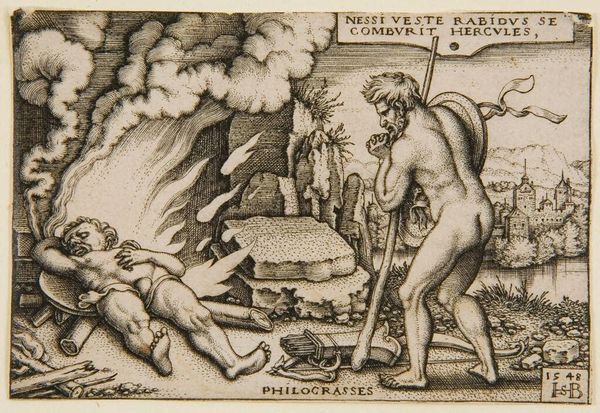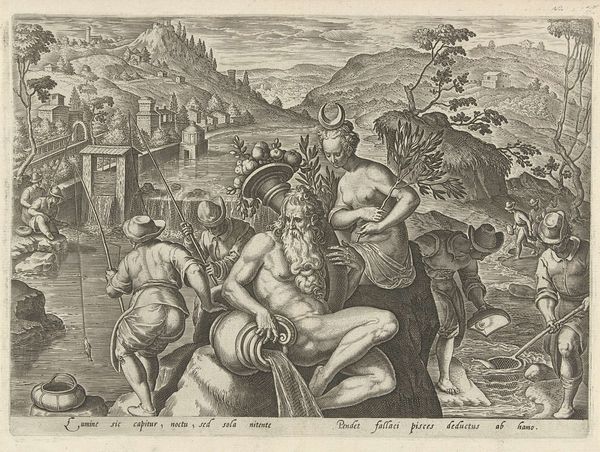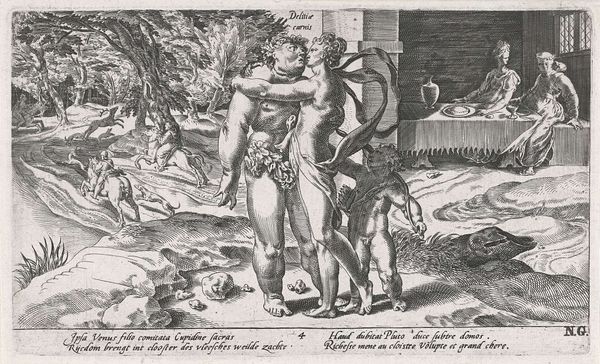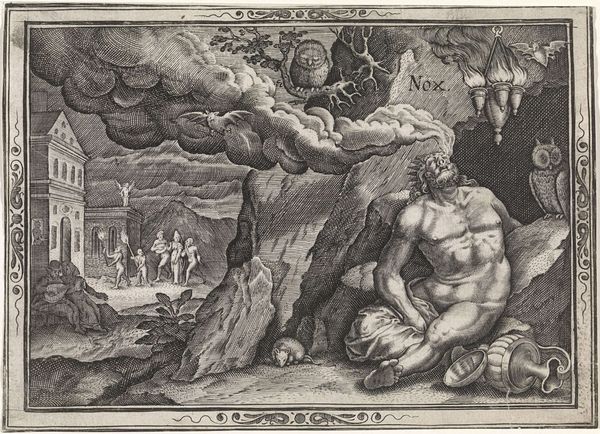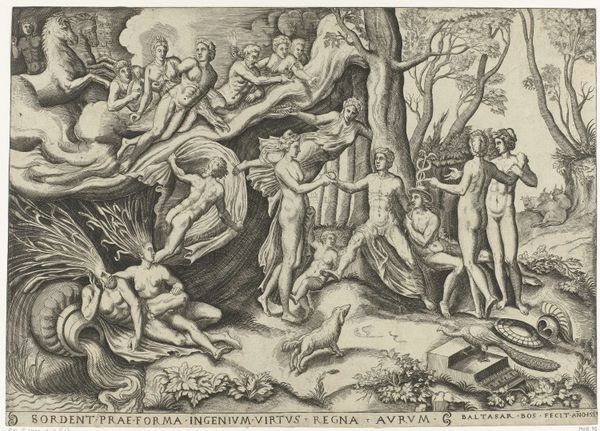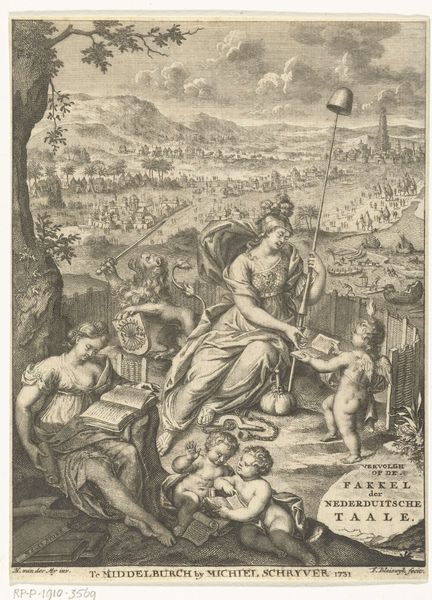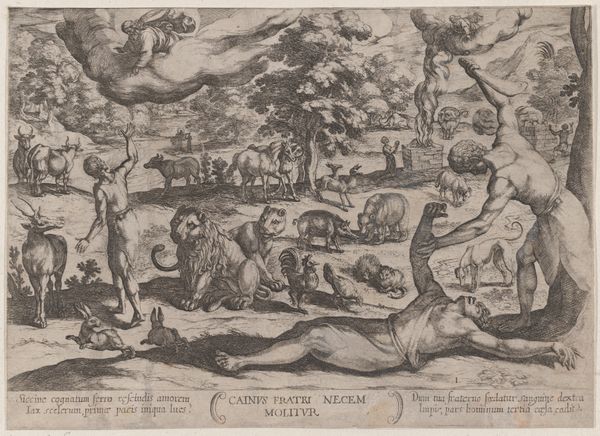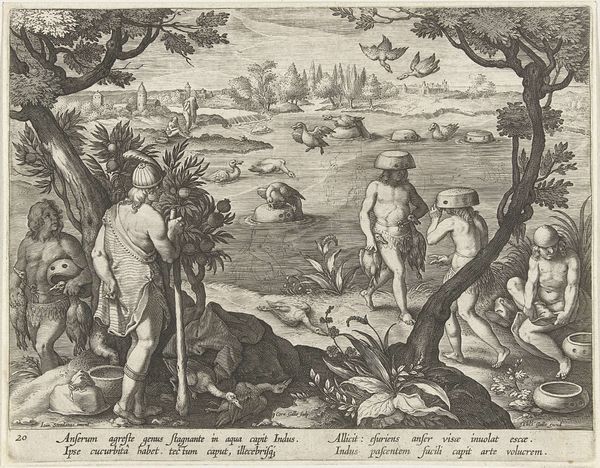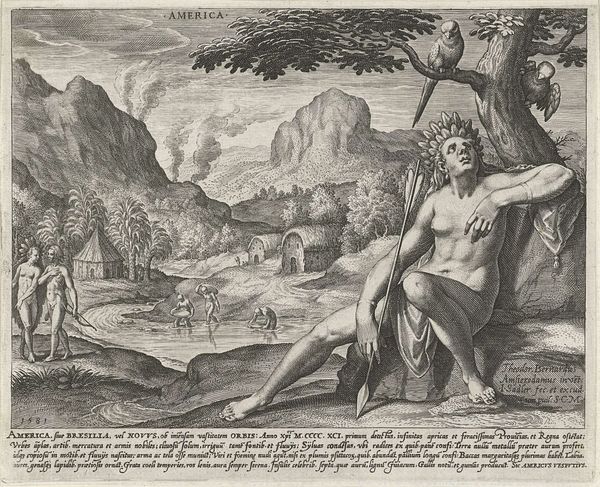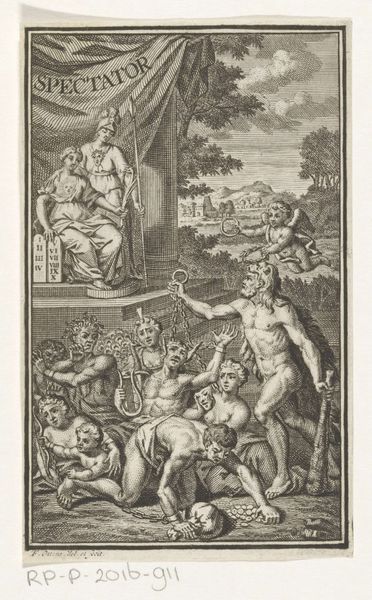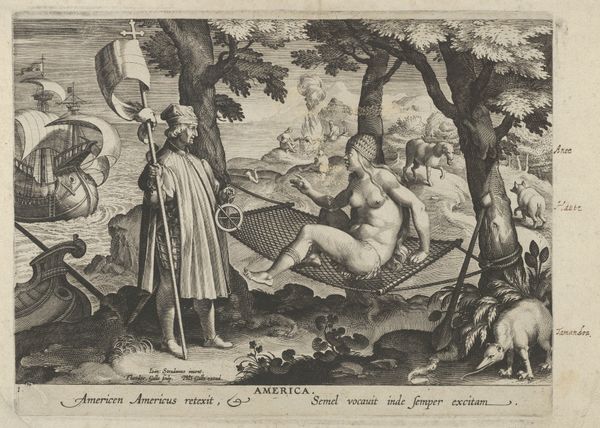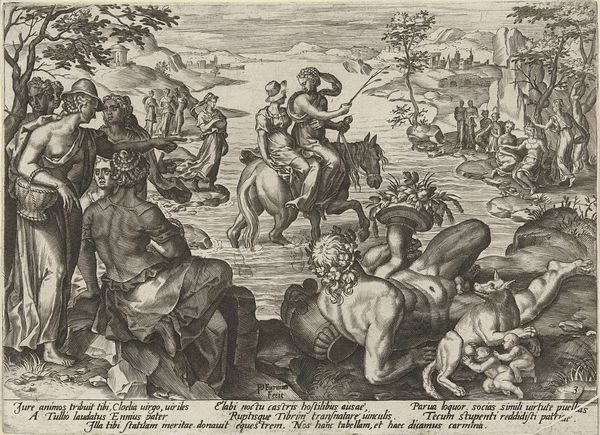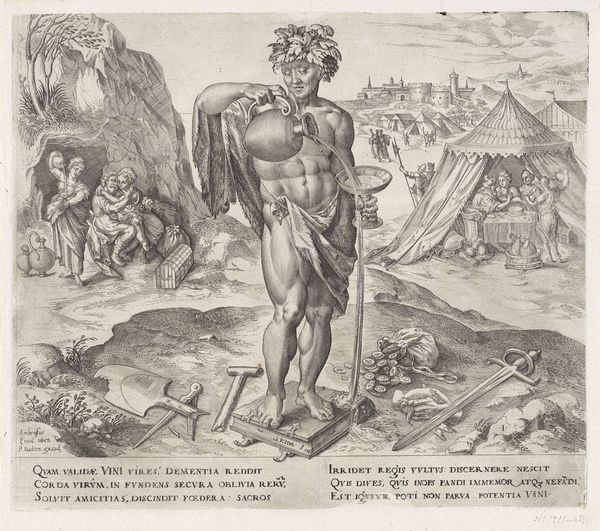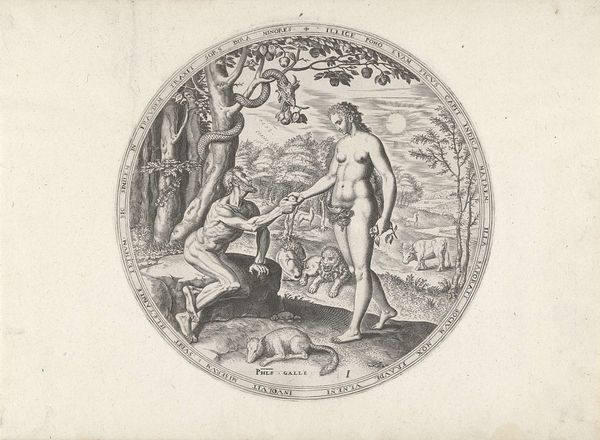
print, engraving
#
allegory
# print
#
landscape
#
figuration
#
11_renaissance
#
history-painting
#
nude
#
engraving
Copyright: Public domain
Maarten de Vos created this engraving, “Spring Ver Veneris,” sometime in the late 16th century. Its allegorical representation of Spring, linked to Venus, the goddess of love, is fascinating when understood in its historical moment. Printed in the Netherlands, the image blends classical mythology with a Northern European sensibility. Note the combination of the sacred and profane as represented by Venus, the animals, and the cherubic figure set against a backdrop of aristocratic leisure. The setting isn’t merely decorative. It speaks to the social structures of the time, reflecting a society where the elite enjoyed the fruits of the land, leisure activities, and family life. The self-conscious display of wealth and status in the print is worth remarking on. It points to the emergence of a wealthy merchant class in Northern Europe, with the financial capital to buy images and the cultural capital to appreciate their meaning. As historians, we can look at sources from the period to better understand the role of prints in the 16th century, how they helped shape ideas about love, nature, and social class. In doing so, we come to appreciate how art is always contingent on the social and institutional contexts that shape its production and reception.
Comments
No comments
Be the first to comment and join the conversation on the ultimate creative platform.
